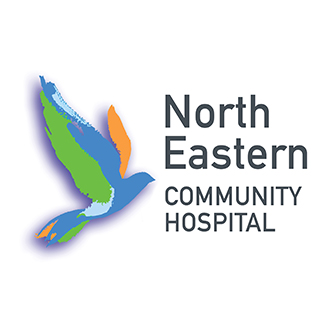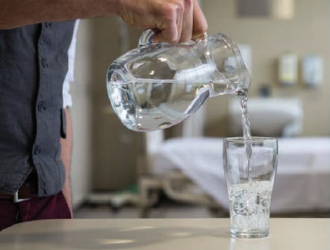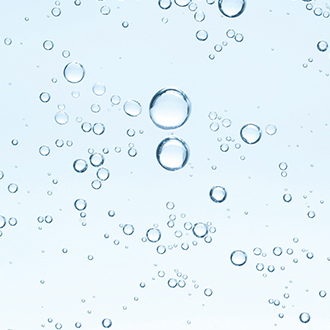<h6>Technical paper</h6><h1 style="color: #00b1bf;"><span class="slider-header-bold" style="color: #00b1bf;">First results of an Electrochemical Water Management System in Australia</span></h1><h5>Sergio Ferro, Tony Amorico, and Erica Donner</h5> <!-- [et_pb_line_break_holder] --><p>Site-specific water quality management plans are increasingly being implemented in Australian health and aged-care facilities in an effort to prevent water-borne infections in vulnerable patients. Newly developed guidelines, such as the enHealth ‘Guidelines for <em>Legionella</em> control in the operation and maintenance of water distribution systems in health and aged care facilities’ (Australian Government, 2015), underline the importance of operational controls such as the installation of continuous in-line disinfection systems and regular flushing of outlets for limiting <em>Legionella</em> bacterial counts and other microbiological risks. <em>Legionella</em> bacteria are the causative agents of Legionnaires’ disease (characterised by severe pneumonia) and Pontiac fever (a milder form of respiratory infection). Legionnaires’ disease is extremely serious in vulnerable patients (e.g. the immunocompromised, elderly, and newborn babies), with mortality rates as high as 40% for patients contracting the disease in health-care settings. This paper demonstrates successful <em>Legionella</em> risk mitigation in an Australian health-care facility following installation and optimisation of an on-site electrochemical water disinfection system.</p><p>In May 2016, an in-line Ecas4 water disinfection system (WDS) was installed at the North Eastern Community Hospital (NECH) in Adelaide, where microbiological water quality monitoring had indicated systemic <em>Legionella</em> contamination of the water distribution system. This not-for-profit, community owned, private hospital and government-funded residential aged-care facility was established in 1973 and currently has 60 beds, including a day surgery unit (8 beds), two operating theatres and a gastroenterology procedure room, as well as an aged care facility that provides permanent and respite accommodation for 84 residents. Substantial investment in building works have resulted in significant structural changes over the last 40 years, including a $2.5 million hospital extension in 1991 and the addition of the purpose-built aged-care facility in 2001. Importantly, the increased complexity of water distribution systems caused by building extensions is one of the <em>Legionella</em> risk factors identified in the enHealth Guidelines for <em>Legionella</em> control. Extensions and renovations often result in lengths of pipe being cut-off or capped, for example, thereby creating ‘dead legs’ with reduced water flow which are ideal environments for <em>Legionella</em> colonisation and biofilm growth. This is therefore a common issue in large, complex structures such as hospitals.</p><p>This particular facility is organized over three storeys and has an average annual water consumption of about 8000 cubic metres. The hot water system comprises four circuits and two risers. In order to minimize the risks of waterborne disease, the hot water was previously heated to 80°C, so as to be delivered to the thermostatic mixing valves prior to points of use at approximately 70°C. Despite the high energy costs, this approach proved to be insufficient, as <em>Legionella</em> and microbial cell counts (measured by standard plate count methods) have exceeded potable water quality guideline limits on multiple occasions in the last few years. Heat disinfection of water supply networks in health-care facilities is complicated by the installation of mixers to prevent patient scalding hazards. This can result in sections of the pipe prior to the point of delivery frequently holding warm water suitable for <em>Legionella</em> growth.</p><p>In order to manage proactively this risk, an in-line Ecas4 WDS was installed. This technology facilitates continuous dosing of low amounts of Anolyte, a diluted, slightly saline solution that contains active chlorine mainly in the form of hypochlorous acid (HOCl). Hypochlorous acid is a neutral (i.e., uncharged) molecule with low molecular weight that is better able to penetrate the cell walls of microorganisms than other forms of chlorine, and is thus a powerful disinfection agent, effectively inactivating bacterial cells. Continuous in-line dosing of the dilute Anolyte solution is, however, safe for higher organisms (e.g. humans) and thus suitable for use in potable water. Due to its neutral pH, it is also less aggressive on treated surfaces and infrastructure than many other disinfection agents (e.g. bleach).</p><p>The Anolyte synthesis is done on-site in the Ecas4 WDS reactor (subject to worldwide patent). This is equipped with four reaction chambers and special anodes, and uses a catalytic mixture of ceramic metal oxides (not including ruthenium or other hazardous components). A minimal dose of Anolyte is injected into the hot and cold water distribution systems to provide continuous disinfection without altering the potability of the water. This continuous dosing facilitates the elimination and ongoing control of microbiological contaminants, including pathogens such as <em>Legionella</em>. In addition, it can also help prevent the build-up of biofilms (sessile microbial communities) that are commonly found on the surfaces of pipe materials and typically implicated in increased microbiological risks.</p><p>Installation of the Ecas4 dosing system at the NECH was preceded by baseline sampling of the tap water throughout the hospital and of the biofilms on the internal surfaces of copper and plastic water distribution pipes in order to determine the initial contamination level and facilitate appropriate verification monitoring of the disinfection process and other water management activities. Microbiological water quality monitoring was conducted using multiple methods in this case study. Total microbial counts (heterotrophic colony counts) and <em>Legionella</em> plate counts (<em>Legionella pneumophila</em> serogroups, and other <em>Legionella</em> species) were conducted by a NATA accredited laboratory used by the hospital for regular monitoring, while complementary diagnostic and verification monitoring, including DNA-based quantitative polymerase chain reaction (qPCR) analysis of the total microbial load and <em>Legionella</em> burden was carried out by researchers at the University of South Australia.</p><p>Baseline sampling was conducted on two occasions in the week prior to the system installation on the 12th May. Post-installation sampling was conducted on the first and eight day after installation and fortnightly thereafter. On each sampling occasion, samples are collected from the hot water taps of the ensuite hand basins in eight private rooms, and from the hand basins in three shared bathrooms. A sample is also taken from the rooftop water storage tank. Further samples are taken as needed for diagnostic purposes, e.g., to test the quality of the incoming potable water and holding tank water, to investigate the effects of more frequent tap flushing, to test the quality of water in the boilers, the quality and temperature of water in the return pipes, etc. Samples are analysed for water temperature at the point of sampling, free and total chlorine, redox potential, pH, electrical conductivity, heterotrophic colony counts, <em>Legionella</em> plate counts (serotyping) and <em>Legionella</em> genomic units (qPCR).</p><p>Table 1 reports the results obtained by the hospital’s regular NATA accredited testing laboratory using the heterotrophic colony count (HCC) and <em>Legionella</em> plate count methods. <em>Legionella pneumophila</em> serogroup 1 and serogroups 2-14 have not been detected in this system either before or after installation of the WDS. However, there had been consistent positive results for other <em>Legionella</em> species during baseline testing and during the WDS installation and start-up. As is often observed during water quality intervention programs, the water quality was negatively impacted in the period shortly following installation as the active agent in the treatment system presumably interacted with the biofilms in the pipe network and microbial debris was subsequently released and flushed from the system. Additional tap flushing was implemented by the hospital staff during this period as an extra measure to help flush the debris from the system and maximise the mixing of the Anolyte solution within the affected pipe network. By the third post-installation sampling event (Day 22 post installation), the plate count results showed consistently improved water quality throughout the system, with no sample points returning positive <em>Legionella</em> plate counts since that time.</p><img class="blog-image" src="https://www.ecas4.com.au/wp-content/uploads/2016/10/Ecas4_AHE_Vol39-No-3_Table-1.jpg"><!-- [et_pb_line_break_holder] --><p class="image-caption"><span class="image-caption-header">Table 1.</span> “Other <em>Legionella</em> species” counts – data from the NECH’s monitoring lab.</p><p>The positive effect on the water quality following installation of the WDS was further confirmed by the <em>Legionella</em> qPCR analysis. This is a DNA-based method which is significantly more specific and sensitive than the plate count method and highly reproducible. The method is very specific to <em>Legionella</em> species as it directly targets a DNA sequence that is characteristic of these bacteria. This specificity gives the qPCR method a lower risk of false positives than the currently standard plate count method. In this case study, the qPCR data (which are expressed in genomic units per mL of water, Figure 1) show very clearly that the <em>Legionella</em> counts in the tested ensuites and bathrooms decreased significantly following installation of the Ecas4 in-line dosing system. Figure 1 shows the average qPCR results from the same 11 rooms sampled repeatedly throughout the case study. The large error bars on the baseline samples to the left of the graph indicate the extremely variable water quality that was typical in this water distribution system prior to the installation of the WDS. This is common under such conditions as the water quality can vary significantly depending on the length of time since the tap was last used. <em>Legionella</em> water quality testing is done by taking the first water that comes out of the tap, so if the water has been sitting in the pipe for some time it may be carrying a high bacterial load when the tap is first turned on. Figure 2 clearly demonstrates however, that the <em>Legionella</em> load decreased significantly over the course of this case study, and a consistently low <em>Legionella</em> cell count was achieved within 2-3 weeks of continuous treatment.</p><img class="blog-image" src="https://www.ecas4.com.au/wp-content/uploads/2016/10/Ecas4_AHE_Vol39-No-3_Figure-1.jpg"><p class="image-caption"><span class="image-caption-header">Figure 1.</span> DNA-based <em>Legionella</em> species quantification data for water sampled from the hot water taps of basins in 11 hospital rooms; the same 11 basins were sampled on each occasion.</p><img class="blog-image" src="https://www.ecas4.com.au/wp-content/uploads/2016/10/Ecas4_AHE_Vol39-No-3_Figure-2.jpg"><!-- [et_pb_line_break_holder] --><p class="image-caption"><span class="image-caption-header">Figure 2.</span> Correlation between free chlorine and qPCR <em>Legionella</em> species quantification data for water sampled from the hot water taps of basins in 11 hospital rooms; the same 11 rooms were sampled on each occasion.</p><p>The improvement in water quality illustrated in Table 1 and Figure 1 is linked to the establishment of increased chlorine residual in the water supply network as a result of the Anolyte dosing. For example, Figure 2 shows the correlation of positive <em>Legionella</em> species counts and free chlorine in the sampled tap water. In Figure 2, red dots indicate baseline data, red asterisks are samples taken during the Ecas4 start-up and transition period, and green triangles represent the most recent data. This figure implies a relationship between the amount of free chlorine in the water and <em>Legionella</em> counts: in particular, a lack of free chlorine is a risk condition that allows the <em>Legionella</em> load to increase.</p><p>Although potable water suppliers in Australia aim to deliver a suitable chlorine residual for disinfection purposes, this varies between buildings depending on their distance from the treatment plant and on-site water management within healthcare facilities may inadvertently exacerbate this situation. For example, water softeners are often installed with the intention of improving water quality, but they also remove active chlorine present in the system, thereby adding to the challenge of maintaining adequate microbiological quality in the water supply. By adding the Ecas4 Anolyte, a significant improvement in chlorine residual is readily obtained, although it take time for free chlorine levels to stabilise throughout the system as the interaction of the Anolyte with bacterial cells and biofilms effectively consumes free chlorine.</p><p>As HOCl is uncharged and has a relatively low molecular weight, it is better able than other chlorine species such as OCl- to penetrate cell walls. It also reacts more rapidly than other chlorine species, in both oxidative and substitution reactions, with organic matter, including critical components of bacterial cells. In contrast with other biocides (e.g., chlorine dioxide, which is often considered as the most powerful disinfectant), hypochlorous acid is more likely to oxidise the polysaccharides that constitute biofilms, and may help decrease this ongoing source of microbial contamination within the pipe network. As noted above, the detachment/dislodgement of biofilm during treatment is the most probable cause for the peaks in HCC and <em>Legionella</em> counts recorded during the first weeks of operation.</p><p>Water management optimisation at this facility is ongoing, and the next steps will include a monitored, progressive decrease of the hot water temperature to save energy and reduce the heat stress on infrastructure and equipment. In addition to ongoing verification monitoring, DNA sequencing of bacteria from biofilm and water samples will also be completed, in order to characterise the bacterial diversity present in the system, and to identify the dominant species before and after implementation of the Ecas4 WDS.</p><h5>About the Authors</h5><p><strong>Sergio Ferro</strong>, Technical Manager at Ecas4-Australia. He recently moved to Australia from Italy, where he worked as a researcher at the University of Ferrara, and has extensive knowledge of chemical and electrochemical processes, particularly in relation to water treatment and disinfection.</p><p><strong>Tony Amorico</strong>, Owner of Ecas4-Australia. He brought this technology to Australia a few years ago after a personal friend contracted MRSA in an Australian hospital and died sometime later. Seeking to actively address this risk, Tony subsequently took it upon himself to introduce Ecas4 into Australian healthcare facilities.</p><p><strong>Erica Donner</strong>, Associate Research Professor with the Future Industries Institute at the University of South Australia. She works primarily in the field of environmental biogeochemistry, with a major emphasis on water/wastewater chemistry and microbial ecology</p><h5>Acknowledgements</h5><p>The authors acknowledge Euan Smith, Gianluca Brunetti, Sotirios Vasileiadis, and Enzo Lombi for their valuable contributions to the monitoring program and analyses. The assistance from Scott Williams, Daniel Walker and Sharon Piro from the NECH, as well as that from Simon Crabb and Daniel Vallelonga (from Ecas4) has also been greatly appreciated.</p><!-- [et_pb_line_break_holder] --><img src="https://www.ecas4.com.au/wp-content/uploads/2017/01/Ecas4-NECH-UniSA_Logo-Blog-Footer.jpg">



